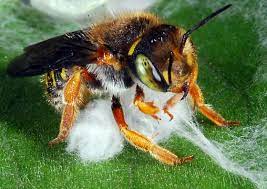
THANKS TO THE ARRIVAL OF SMARTPHONES AND SOCIAL MEDIA WE ARE IN A GOLDEN AGE OF DISCOVERY.
Dr Ken Walker is an architect of citizen science in Australia, who celebrates 40 years at Museums Victoria this month.
During this time the taxonomic scientist has discovered more than 150 new species and had several named after him. He has catalogued over 2.5million samples and led expeditions all over the world, yet he says there is no better place to make a discovery than the Australian backyard.
Thanks to the arrival of smartphones and social media, Walker says we are in a golden age of discovery in which any one of us can become a citizen scientist.
“There’s still so much to learn” claims Walker “Worldwide, we think only about 20 per cent of the world’s fauna has been identified. Most of the cuddly, furry creatures have, but the invertebrates, mites, beetles and insects still haven’t. So there’s a lot of discovering still to do, and with the invention of smartphones citizen scientists hold the key to unlocking the secrets of the universe right there in their hands.”
One afternoon last March, Pam Lock from Sale, noticed a pretty bee while out in her garden. The bee was brighter in colour than any she had seen before and had a distinct zigzag flying pattern.
She snapped a photo of the bee using her phone and posted it on Facebook asking “What is this bee on my borage?”
Within a few hours Lock had received replies from people all over. One of them came from Walker who suspected there was something special about the bee species and asking her to contact him as soon possible.
 The bee turned out to be a rare European wool carder bee sending Walker straight to Pam Lock’s back garden. “I immediately recognised it as this exotic bee” he enthuses.
The bee turned out to be a rare European wool carder bee sending Walker straight to Pam Lock’s back garden. “I immediately recognised it as this exotic bee” he enthuses.
“Australia was the last known continent to get this species of bee and we found it in Pam’s backyard.”
This discovery led to a scientific paper co-authored by Walker and Lock which was published in The Australian Entomologist last year.
Australians have a proud history of accidentally discovering things of scientific significance. Arguable, one of the most famous discoveries was the Wollemi Pine.
This is one of the oldest and rarest plants dating back to the time of dinosaurs and was found in the Blue Mountains by David Noble, a park ranger, in 1994.
“People are always finding things” says Walker and when computers came along he created a database to store these findings however there was no way of sharing this information.
That all changed when the internet came along!
Walker was one of the founders of a citizen science website called BowerBird.org.au. Within this site nature enthusiasts could upload their images and share their sightings with the world.
“Everyone can be a citizen scientist now” says Walker “and the wonderful thing about it is the speed with which we can identify a new species now. It’s really very exciting.”
When he’s not out in the field Walker can be found in his office at Museums Victoria surrounded by millions of dead bugs and creepy crawlies carefully catalogued and preserved in his ‘bug-bank’ – A tiny sample of a lifetime’s work of rare and precious things.
However, in reality it’s Walker himself who is the real living treasure.
“This job has no boundaries, it’s endless,” he says. “There is always something to discover and there’s not a day goes by that I don’t learn something new. I just love it, and I just love being out in nature, “
Bronwyn Reid | 4t Consultants
15 | 07 | 2022
